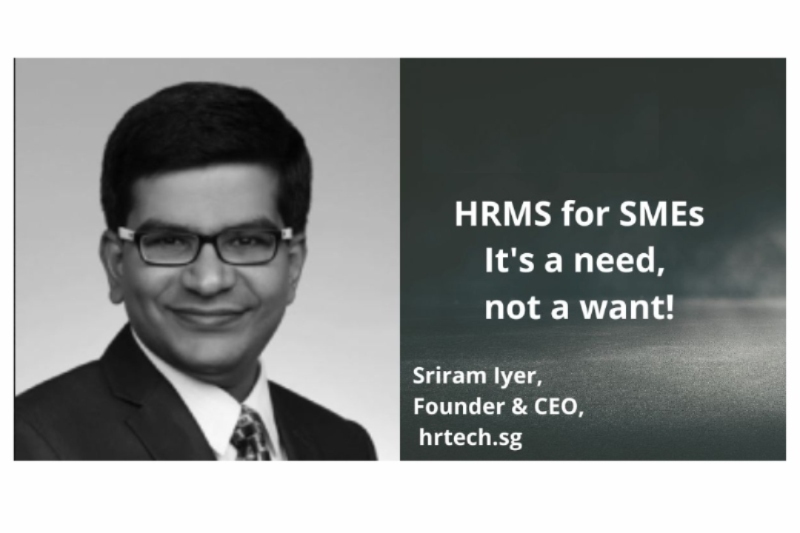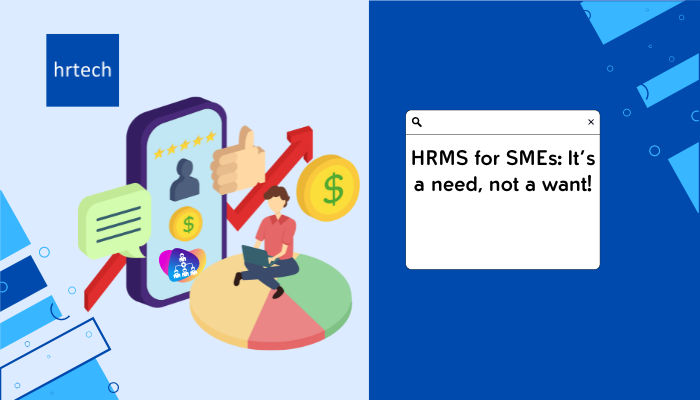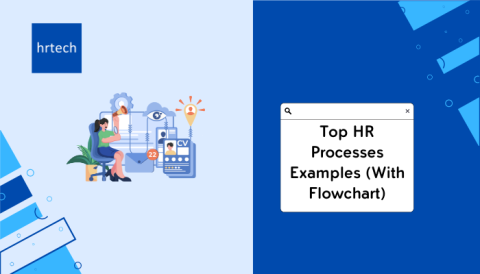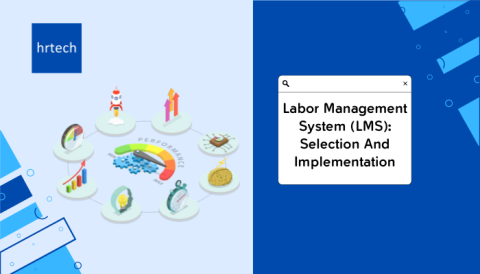Digitalisation is for here to stay. And it is imperative for businesses of all shapes and sizes to use it to their benefit and jump onboard.

A lot has been emphasised on the need for all sizes of enterprises to embrace technology to not just sustain but expand too. But the Small and Medium Enterprises (SMEs) are always challenged with limited resources. Often than not, a basic tool is often overlooked by most SMEs due to budgetary constraints, which in fact can provide them an edge in the competitive talent landscape – we are talking about the quintessential Human Resources Management System (HRMS).
WHAT IS A HRMS?
HRMS is a software application or platform that automates, integrates, and manages all routine HR processes of an organisation (such as managing employee and organisational information, Payroll & Benefits Administration, Workforce Scheduling & Shifts Management, Leave Management, Expenses Claims Management, Performance Management, Recruitment, Learning & Development, and so on).
Such platforms, which are now available on the cloud too, enable the HR teams to significantly increase their productivity by making their overall operations effective and efficient. These are now made available to SMEs in a format that is user-friendly, easily administered and usable by someone with no or little tech knowledge. Managing the workforce can now be done truly with the click of a button.
NEED FOR ADOPTION OF A HRM SYSTEM
Highlighted below are some key benefits of using an HRMS:
1. “Plug & Play” (readymade) cloud systems require little configuration and setup, thereby enabling easier adoption of the new system by employees & HR administrators.
2. Reduced costs due to on-cloud deployment, with no upfront infrastructure costs. Not just that, the new cloud-based HRMS for small businesses cost just a few dollars per employee per month for basic versions. Like an a-la-carte menu, you can pick and choose the functionalities required and cost might vary accordingly. This significantly lowers not just the capital expenditure, but also operating expenditure costs (due to lower labour, print & electricity expenses)
3. Recruitment & Onboarding cycles are reduced as data is now easily managed in one location, allowing companies to monitor progress, generate employment offers and seamlessly onboard / integrate newcomers.
4. Enhanced Talent Experience through an effective online performance management system with 360-degree feedback, real-time monitoring of KPI’s and recording of data. These would enable better employee performance and higher employee retention.
5. Improved Employee Self-service option allows users to operate with a single-click to manage their personal and job-related information in one place. Not just that, it helps in effectively managing millennials who like to be hands-on in getting things done without seeking help.
6. Faster employee service delivery by all support functions as they now have common access to information
7. Increased data accuracy means fewer corrections, thereby enabling seamless information flow across departments
8. Adherence to data privacy and compliance aspects as they are designed to address the needs of enterprises which have presence across multiple countries and different legal framework
9. Most importantly, Data Analytics with insightful metrics across multiple parameters are now provided at the click of a button, thereby helping businesses make informed decisions
Today, HRTech marketplace is flooded with multiple local & multi-national HRMS providers. The sheer volume of service providers means selecting the right HRMS can be a daunting experience.
Hence, here are some key points to consider before you make the final decision on the service provider:
1. Perform a comprehensive comparative differential analysis and opt for an HRMS that fits the organisation’s needs, as every service provider have their specific strengths
2. While price may be a key shortlisting criterion, it is also important to consider the ease of deployment, maintenance, compliance and privacy laws. For example, if there are local laws governing cloud deployment or data related aspects, such aspects need to be adhered to a factored mandatorily
3. Based on your organisational maturity in the growth cycle, the HR team’s requirements might vary significantly. While one organisation would require a more advance “Learning & Development” functionality, some others might require a more advance “Workforce Tracking & Deployment” functionality. Hence, it’s important for the HR team to map out the nature of requirements across its various HR functions (such as Recruitment, Employee Onboarding, Performance Management System, Learning & Development, Employee Communication, and Payroll & Benefits Administration) to finalise the appropriate system.
A detailed HRTech Market Map (2019) of #hrtech service providers servicing the Singapore talent marketplace is provided here. This can be a quick reference guide for members to be aware of the various HRMS service provider options available in Singapore. This market map was put together by hrtech.sg (a Singapore-based HRTech advisory and analyst firm) & Adrian Tan (a HRTech subject matter expert).
Digitalisation is for here to stay. And it is imperative for businesses of all shapes and sizes to use it to their benefit and jump onboard. Today, a better employee experience can easily be created by HR teams leveraging technology to seamlessly delight a multi-generational workforce with differential needs.
This blog was originally posted in IHRP Connect, an exclusive community of IHRP certified professionals
About the author :

Sriram Iyer is the founder & CEO of hrtech.sg, a Singapore- headquartered #hrtech market development and analyst firm. A Human Resources practitioner with over two decades of experience, he is also a Certified Strengths Coach and a passionate #hrtech advocate. In his career, he has also played leadership roles with the Singtel Group Enterprise and Nasdaq-listed Cognizant Technology Solutions. He is also the winner of the coveted Cognizant Chief People Officer’s Global Award in 2010. LinkedIn





